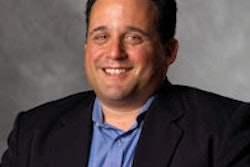The U.S. market for teleradiology services nearly tripled in size from 2003 to 2007, but the market's torrid growth may already be slowing, according to a study by American College of Radiology (ACR) researchers published in the November issue of the American Journal of Roentgenology.
Researchers from the ACR of Reston, VA, found that external teleradiology usage patterns are generally as predicted, with the exception of surprisingly low utilization by nonmetropolitan practices. Although hard data are not available, the researchers also believe that growth has since slowed down, and that very few practices are using teleradiology services providers for daytime reading or subspecialty interpretations.
Seeking to report on utilization patterns of external, off-hours teleradiology services in 2007, the study team analyzed data (stripped of all individual identifiers) from the ACR's 2007 survey of member radiologists. Responses were weighted to be nationally representative of individual radiologists and radiologist practices, according to the research team led by Rebecca Lewis of the ACR (AJR, November 2009, Volume 193:5).
Overall, 44% of all radiology practices (including 45% of all U.S. radiologists) reported using external, off-hours teleradiology services in 2007, up from 15% of practices (containing 15% of U.S. radiologists in 2003). In other findings, large increases were reported over the 2003 survey in almost all geographical regions, location types, practice types, and practice sizes, according to the researchers.
From regression data analysis, the researchers found that teleradiology usage patterns largely followed expectations. For example, primarily academic practices had lower odds of using teleradiology services than private radiology practices, with other practice characteristics being equal. In addition, large practices (≥ 30 radiologists) had lower odds of utilizing external, off-hours teleradiology than practices with 15 to 29 radiologists.
Small practices with one to 10 radiologists had high odds for using the services. Surprisingly, nonmetropolitan practices did not, despite conventional wisdom that telemedicine is perhaps most relevant for addressing healthcare access issues in rural areas.
"We found no significant elevation of the odds of use of out-of-practice teleradiology use among practices in nonmetropolitan areas in either 2003 or 2007," the authors wrote. "Perhaps the logistics and the software and hardware required to link up with an [external, off-hours teleradiology service] are relatively complex or expensive for these geographically distant practices and the relatively small hospitals they serve."
No significant differences in teleradiology use were found by geographical region.
Slowdown
The recent softening in the radiologist job market and projection that there's a small surplus of radiologists may have an ambiguous effect on the growth of external teleradiology services, according to the authors.
"On the one hand, it should make more radiologists available to teleradiology firms as employees, even if some of the jobs at these firms turn out to be relatively unattractive," the authors wrote. "On the other hand, it should make regular radiology practices more able to hire enough staff to cover call without strain, thus undercutting the main rationale for using [external, off-hours teleradiology services]."
Despite some predictions that the market will continue to expand, the authors believe that recent evidence (such as quarterly results from teleradiology firm Nighthawk Radiology Services) reveals that growth has slowed. In addition, an ACR researcher surveyed a convenience sample of radiology practice leaders in the autumn of 2008.
This survey found that extremely few of these respondents were using teleradiology firms for daytime reads or subspecialty interpretations. The provision of these services is a prominent expansion strategy for the teleradiology industry, according to the authors.
"Another observation was that a considerable number of practices that had been using [external, off-hours teleradiology services] no longer were doing so; this was virtually unprecedented earlier," the authors wrote.
By Erik L. Ridley
AuntMinnie.com staff writer
October 20, 2009
Related Reading
AJR: Radiologists work longer hours, but get more vacation, September 24, 2009
The Profit Center: Part 6 -- Imaging Advantage: Much ado about the same old thing? August 18, 2009
Imaging Advantage creates uproar with new business model, July 9, 2009
ARRS study: Teleradiology expands VC to rural areas, April 23, 2009
Teleradiology can speed pulmonary CTA reads, March 23, 2009
Copyright © 2009 AuntMinnie.com




















